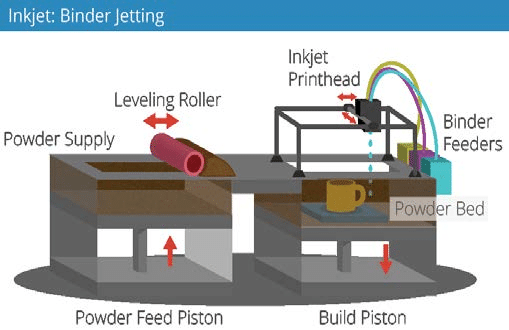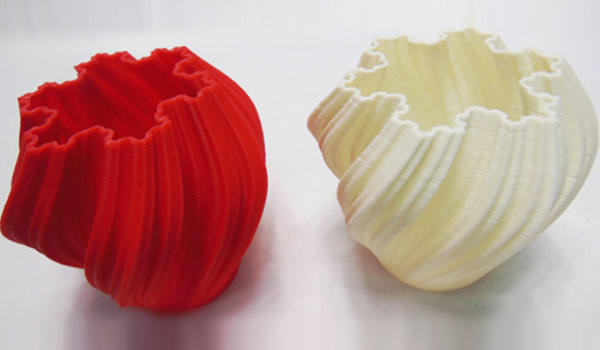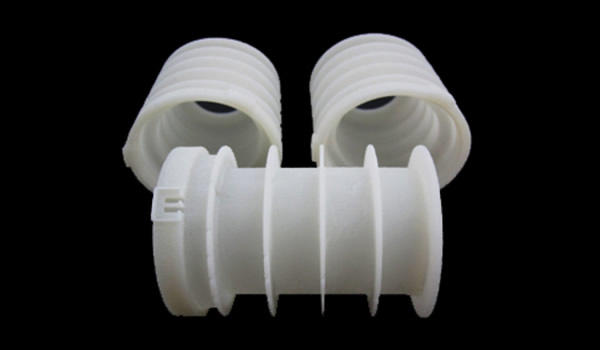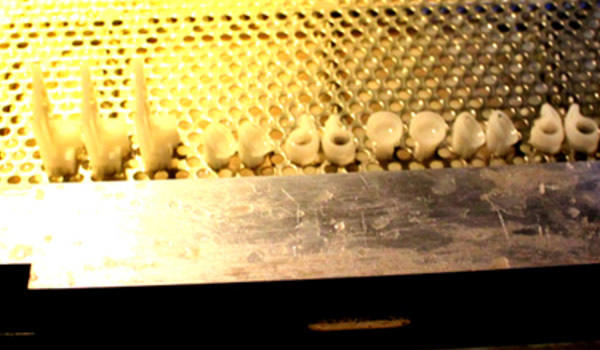Traditionally, making a prototype can be somewhat expensive as the prototype-making process involves molding, assembly, and labor. In conventional machining, casting and forging processes, the material is removed from a stock item or poured into a mold and shaped by means of dies, presses, and hammers. Making a prototype is one of the most time-consuming and costly processes for developing and manufacturing products. Rapid prototyping has drastically improved this situation.
Rapid prototyping was born in the late 1980s. Rapid prototyping is a group of techniques used to build a prototype from a computer drawing by creating layers of the shape and then joining them together. The techniques that rapid prototyping involves include but are not limited to mechanical engineering, computer-aided design, layered manufacturing, materials science, computer numerical control, and laser technology. It provides a brand new way to turn a conceptual design into a prototype or final product in an automatic, visualized, faster, and accurate manner.
Rapid prototyping can be found in a lot of industries. Parts made through rapid prototyping techniques are used as mockups for cell-phones, medical devices, scientific inventions, aerospace blade models and so on. Silicone cast parts are often used for medical device testing and flexible products. Machined prototypes can be used everywhere. Additionally, you can make rapid tooling for injection molding by employing CNC machining.
Prototyping is an essential part of the new product development process, and rapid prototyping technologies could help to accelerate this process. More importantly, rapid prototyping can be more than that by playing a vital role for the following purposes.
Materialization of conceptual designs
Rapid prototyping could turn a conceptual design to a physical object for the purpose of evaluating the appearance, function, material and so on before moving to the next stage. Traditionally, the creativity of designers is usually limited by the concern that if their proposed design cannot be finally manufactured for a reason, the prototyping process may cost a lot of money and waste a lot of time. Rapid prototyping could give a full play to the innovation and creativity of designers since the process of preliminarily turning their concepts into physical objects is no longer costly and time-consuming. Rapid prototyping is able to bring their ideas to life to have a closer look at them. Rapid prototyping makes the pre-manufacturing evaluation more convenient. As products made through rapid prototyping is hugely similar to the final product, rapid prototyping makes it feasible to do product development evaluation with the pre-release version.
Manufacturability evaluation
Not everything that can be designed can be manufactured. Manufacturability refers to the extent to which a new product can be easily and effectively produced at minimum cost and with maximum reliability. Evaluating the manufacturability of a proposed design by rapid prototyping involves determining whether it can be manufactured with a given set of manufacturing operations and standards. Also, if the manufacturability of a proposed design is proven to be practical, they can be various ways to manufacture it by adopting different materials, techniques, and sequences. Rapid prototyping can help a manufacturer to decide whether and how a proposed design could be constructed. The first step is to identify all machining operations which can potentially be used to create the given design. By using these operations, different operation plans for machining the design are generated. Each time a new operation plan is generated, the manufacturer could examine whether it can produce the desired shape and tolerances, and calculate its manufacturability rating by using rapid prototyping techniques. If no operation plan can be found that is capable of producing the design in the rapid prototyping process, then the given design is considered unmachinable.
Function tests
By means of rapid prototyping, you can quickly make a sample of a proposed product and carry out various checks and tests - precision, heat-resistance, transparency, flexibility, chemical resistance and so on. Many potential defects can be found in the parts manufactured by rapid prototyping techniques. Granted, prototypes made by traditional molding can also work. But the high costs seldom allow the manufacturer to fine-tune the prototypes in a progressive way. Rapid prototyping makes prototyping process of a group of similar products far less expensive. The manufacturer could improve details progressively with each prototype it makes.
Medical devices
Compared to conventional techniques, rapid prototyping makes it relatively easy to produce patient-specific medical devices with complex geometries. It also offers good bio-compatibility, as technology uses tailor-made materials. According to the FDA, medical devices such as implants, surgical instruments, dental restorations, and external prosthetics can be made through rapid prototyping. Rapid prototyping has been increasingly visible in this domain. For those who have suffered from loss of solid organs like a tooth, part of a bone, rapid prototyping offers treatments that are much more adapted to each patient, maximizing the life quality of the patient after the transplantation. Rapid prototyping will enable the medical sector to develop further in a more customizable way.
Low Volume Production
Low volume production usually translates into production quantities that are far less than a threshold production run that will be accepted by a factory. But low volume production parts are very often demanded. They are usually replacement parts for parts that are no longer in production or are otherwise unavailable. These are often parts for repair or refurbishment. A factory that accepts low-volume production will always ask for a daunting price. However, rapid prototyping makes low volume production easier and less expensive. Even the output of one single piece becomes possible thanks to rapid prototyping technologies.
Rapid prototyping has gone through more than thirty years and rapid prototyping technologies have been increasingly applied in more and more areas. It has evolved from a manufacturing method for models and prototype parts from the very beginning to today’s catalyst of industrial and consumption upgrading. The benefits of rapid prototyping have made it one of the favorites of the manufacturing industry.
Rapid prototyping provides a time-saving and efficient approach to products research and development. According to relevant investigations and statistics, by introducing rapid prototyping, a manufacturer is able to save the cost for the research and development of new products by from two-thirds to four-fifths. The cycle for the research and development of new products could be reduced by from four-fifths to nine-tenths. Rapid prototyping could help to eliminate errors usually seen during traditional mass production. Rapid prototyping technology could provide you with a scale model or a precisely identical prototype before the production. You could take advantage of the opportunity to study the product at its design stage and correct its potential deficiencies. After all, a significant error in the rapid prototyping process is much cheaper than a small one found once they hit the market. Printing on a 3D printer one sample is much cheaper than its production by casting, molding or on a CNC machine. Rapid prototyping technology is free from the molding process, which is highly limited by the structure and shape of the products. Theoretically and technically, so long as CAD data is provided, an object could be produced from concept to the final product by rapid prototyping. Moreover, rapid prototyping is usually completed in an automatic manner, which saves labor costs.
Rapid prototyping helps customized commodities and personalized consumption. We should notice a trend that we have entered an era featuring customized commodities and personalized consumption. In the past, the consumption model of the human being is profoundly affected and limited by the commercial manufacturing capacity. People could only buy what could then be manufactured and provided. The First Industrial Revolution and the Second Industrial Revolution have dramatically changed our manufacturing and consumption model. Commodities become incredibly abundant, in excess of what is needed sometimes. The way people consume, in turn, changes the way commodities are manufactured. People have gradually sidestepped commodities manufactured in bulk which fail to add character to their consumption. The low cost of rapid prototyping will allow manufacturers and service providers to make several designs of a single product at once, test each one of them, make edits, and launch a perfect object into production. Customized commodities and personalized shopping experience have become increasingly popular and preferred. Rapid prototyping makes it possible to manufacture customized commodities in bulk. Rapid prototyping will force manufacturers and service providers to be more customer-oriented. Those manufacturers and service and providers that strive to provide customized commodities and services will benefit from rapid prototyping technologies by attracting an increasing number of customers and clients.
Rapid prototyping helps manufacturers to focus on the high value-added design process. Under the background that the global is moving towards the third industrial revolution, an increasing number of countries have begun to formulate a strategy of “re-industrialization” by removing the low value-added processing and manufacturing, reshaping the manufacturing industry chain, and strengthening high value-added domains through technological innovation and design innovation. The maturity of rapid prototyping technologies has provided tangible conditions for this strategy.
Many countries have long been a giant in terms of manufacturing while becoming a dwarf in terms of industrial design. These countries, with underdeveloped design capabilities, are struggling with figuring out what can be manufactured and what cannot be manufactured. They do not have the original design concepts for products that are widely popular on the market. What they can do is to follow behind countries with strong design capabilities by copycatting. By developing rapid prototyping technologies, they could focus their attention on the high value-added industrial design process as the manufacturability of their concepts can be easily evaluated with rapid prototyping technologies.
Rapid prototyping is generally an additive layer manufacturing process. Additive layer manufacturing is more commonly known as 3D prototyping, which builds a three-dimensional object from a computer-aided design (CAD) model by successively adding material layer by layer. The majority of rapid prototyping systems that can be found today work on this principle for constructing a physical model. Specific working principles vary from system to system, but rapid prototyping technologies can be boiled to the following steps.
Generation of a 3D printable model
The first step of this rapid prototyping process is to create a 3D printable model with CAD software. It can be generated either by a 3D scanner, a plain digital camera or photogrammetry software. 3D printed models created by CAD software is preferred owning to reduced errors which, if any, can be corrected before printing. The process of 3D scanning collects digital data on the shape and appearance of a real object and creates a digital model based on it.
2. Conversion to an STL file
3D printable models created by CAD software are then supposed to be saved as a stereolithography file format (STL) which stores data based on triangulations of the surface of CAD models. STL is not an ideal format for additive layer manufacturing because it generates large file sizes. A newer CAD file format, the Additive Manufacturing File Format (AMF), has been introduced in 2011 to solve this problem and accelerated the rapid prototyping process.
3. Processing by rapid prototyping machine
Once the STL file has been appropriately generated, it will be then loaded into a rapid prototyping machine for processing. Sliced layers of the model will be created by the rapid prototyping machine until the completion of the model.
Processing modes vary with the rapid prototyping technology that the machine adopts. The different types of rapid prototyping technologies can be categorized into three types: liquid-based (SLA and Inkjet based rapid prototyping), solid-based (FDM), and powder-based (SLS). They are just a few examples of the different rapid prototyping technologies in existence. Regardless of the different types of rapid prototyping technologies, all of them require the STL file of the 3D CAD model for fabrication. These STL files are then used to generate to 2D slice layers for rapid prototyping. To have a better understanding and knowledge of different rapid prototyping technologies will help you to choose more wisely among them. The smartest move will always be telling your rapid prototyping service provider your needs, and it will suggest which rapid prototyping technology will best suit your needs.
1)Stereolithography Apparatus (SLA)
SLA rapid prototyping technology has three main parts: a vat filled with ultraviolet (UV) curable photopolymer, a perforated build tray, and a UV laser. The rapid prototyping process starts with positioning the build tray a slice layer depth below the surface of the photopolymer. A slice layer is cured on to the build tray with the UV laser. The pattern of the slice layer is “painted” with the UV laser with the control of the scanner system of the rapid prototyping technology. Once the layer is cured, the tray lowers by a slice layer thickness allowing for uncured photopolymer to cover the previously cured slice. The next slice layer is then formed on top of the previous layer with the UV laser, bonding it to the previous layer. This process is repeated until the entire 3D object is fully formed. The finished 3D object is removed and washed with solvent to remove excess resin off the object. Finally, the object is placed in a UV oven for further curing. During the rapid prototyping process, support scaffolding can be fabricated to support overhangs or undercuts of the 3D object. These can be cut off after the entire rapid prototyping process.

2)Inkjet-based Printing
This rapid prototyping technology is similar to the SLA technology, both of which utilize UV curable photopolymer as the build material. Two types of UV curable photopolymer materials are used in this rapid prototyping technology: a model that acts as the structure and support material acting as scaffolding to the object. This rapid prototyping technology is based on inkjet systems where it has ‘ink’ cartridges and a print head. During the rapid prototyping process, a thin layer of photopolymer is jetted on to the build tray. The jetted photopolymer is cured by UV lamps mounted to the side of the print heads. Next, the tray lowers by precisely one layer’s thickness, allowing for the next slice to be jetted on to the previous slice. This process repeats until the 3D object is formed. Once completed, the support material is removed with a high-pressure washer.

3)Fused Deposition Modeling (FDM)
FDM rapid prototyping technologies use a thermoplastic filament, which is heated to its melting point and then extruded, layer by layer, to create a three-dimensional object. Two kinds of materials are used: a model material which acts as the structure and support material which acts as a scaffolding to support the object during the rapid prototyping process.
During the fabrication process, the filaments are fed to an extrusion nozzle unwounded from a coil. This nozzle is heated to melt the filament which is then extruded on to a build tray forming a slice of the 3D object as cools and hardens. Next, the build tray is lowered or the extrusion nozzle is raised, by a thickness of an extruded layer, for the next slice layer to be extruded on top of the previous layer. As the extruded thermoplastic cools, it also binds to the previous layer. This continues until all the slices are printed to finally form the full 3D object. After the rapid prototyping process, the support build material is typically dissolved by water if water-soluble wax was used or broken off if it was used.

4)Powder Base: Selective Laser Sintering (SLS)
SLS rapid prototyping is similar to SLA in which it also uses a laser and builds tray. It uses a powder build material instead of using a vat of liquid photopolymer. The powder used in this rapid prototyping technology can be plastic nylon, ceramic, glass, or metal. This rapid prototyping technology can be used to create both prototypes as well as final products.
A high power laser is used to heat the powder build material to just below its boiling point (sintering) or above boiling point (melting) to fuse it together to form the slice layers of the 3D object. Once a slice layer is formed, the build tray lowers by a slice layer’s thickness. Next, the roller spreads more powder build material over the previously fused slice layer for the next slice layer to be sintered. This repeats until the 3D object is formed. Another difference to the SLA rapid prototyping technique is that it does not require any support scaffolding as it is supported by the powder build material surrounding the object.
Different rapid prototyping technologies have their own distinct advantages and applications. The chart below compares the features of different rapid prototyping technologies.
| Stereolithography Apparatus (SLA) | Inkjet-based | Fused Deposition Modeling (FDM) | Selective Laser Sintering (SLS) | |
| Speed | Average | Poor | Poor | Average to good |
| Accuracy | Very good | Excellent | Fair | Good |
| Surface Finish | Very good | Excellent | Fair | Good to excellent |
| Strengths | · Large part size · Accuracy | · Accuracy · Finish | · Price · Materials | · Accuracy · Materials |
| Weaknesses | · Post-processing · Messy liquids | · Speed · Limited materials · Part size | · Speed · Part size | · Size and weight · System price · Surface finish |
| Typical applications | · Very detailed parts and models for fit & form testing · Trade show and marketing parts & models · Rapid manufacturing of small detailed parts · Fabrication of specialized manufacturing tools · Patterns for investment casting · Patterns for urethane & RTV molding | · Most detailed parts and models available using additive technologies for fit & form testing · Patterns for investment casting, especially jewelry and fine items, such as medical devices · Patterns for urethane & RTV molding | · Detailed parts and models for fit & form testing using engineering plastics · Detailed parts for patients- and food contacting applications · Plastic parts for higher temperature applications · Trade show and marketing parts & models · Rapid manufacturing of small detailed parts · Patterns for investment casting · Fabrication of specialized manufacturing tools · Patterns for urethane & RTV molding | ·Aerospace Hardware ·UAS, UAV, UUV, UGV Hardware ·Medical and Healthcare ·Electronics; Packaging, Connectors ·Homeland Security ·Military Hardware |
Available build material | ·Acrylics (fair selection) ·Clear and rigid ·ABS-like ·Polypropylene-like (PP) ·Flexible or elastomeric Water-resistant | ·Polyester-based plastic ·Investment casting wax | ·ABS ·Polycarbonate (PC) ·Polyphenylsulfone Elastomer | ·Nylon, including flame-retardant, glass-, aluminum-, carbon-filled and others providing increased strength and other properties ·Polystyrene (PS) ·Elastomeric ·Steel and stainless steel alloys ·Bronze alloy ·Cobalt-chrome alloy Titanium |


